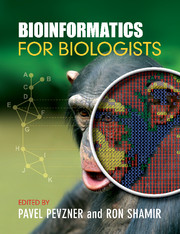References[1] N., Guelzim, S., Bottani, P., Bourgine, and F., Képès. Topological and causal structure of the yeast transcriptional regulatory network. Nature Genet., 31:60–63, 2002.
[2] National Human Genome Research Institute. Image provided for free public use through the US National Institutes of Health Image Bank as NHGRI press gallery photo 20018.
[3] M. B., Eisen, P. T., Spellman, P. O., Brown, and D., Botstein. Cluster analysis and display of genome-wide expression patterns. Proc. Natl. Acad. Sci. U S A, 95:14, 863–14, 868, 1998.
[4] N., Metropolis, A. W., Rosenbluth, M. N., Rosenbluth, A. H., Teller, and E., Teller. Equation of state calculation by fast computing machines. J. Chem. Phys., 21:1087–1092, 1953.
[5] S., Geman and D., Geman. Stochastic relaxation, Gibbs distributions, and the Bayesian restoration of images. IEEE Trans. Pattern Anal. and Machine Intell., 6:721–741, 1984.
[6] G. E., Schwarz. Estimating the dimension of a model. Ann. Stat., 6:461–464, 1978.
[7] H., Causton, J., Quackenbush, and A., Brazma. Microarray Gene Expression Data Analysis: A Beginner's Guide. Blackwell Science, Malden, MA, 2003.
[8] A., Zhang. Advanced Analysis of Gene Expression Microarray Data. World Scientific Publishing, Toh Tuck Link, Singapore, 2006.
[9] L., Wasserman. All of Statistics. Springer, New York, 2004.
[10] L., Wasserman. All of Non-Parametric Statistics. Springer, New York, 2006.
[11] T. M., Mitchell. Machine Learning. WCB/McGraw-Hill, Boston, MA, 1997.
[12] T., Hastie, R., Tibshirani, and J., Friedman. The Elements of Statistical Learning: Data Mining, Inference, and Prediction. Springer-Verlag, New York, 2001.
[13] P., Congdon. Applied Bayesian Modelling. John Wiley and Sons, Chichester, 2003.
[14] A., Gelman, J. B., Carlin, H. S., Stern, and D. B., Rubin. Bayesian Data Analysis. CRC Press, Boca Raton, FL, 2004.
[15] R. E., Neapolitan. Learning Bayesian Networks. Pearson Prentice Hall, Upper Saddle River, NJ, 2004.
[16] W. R., Gilks, S., Richardson, and D. J., Spiegelhalter. Markov Chain Monte Carlo in Practice. Chapman and Hall/CRC, Boca Raton, FL, 1996.
[17] A., Ruszczyński. Nonlinear Optimization. Princeton University Press, Princeton, NJ, 2006.
[18] S., Boyd and L., Vandenberghe. Convex Optimization. Cambridge University Press, New York, 2004.
[19] P., Dhaseleer, S., Liang, and R., Somogyi. Genetic network inference: From co-expression clustering to reverse engineering. Bioinformatics, 16:707–726, 2000.
[20] N., Friedman, M., Linial, I., Nachman, and D., Pe'er. Using Bayesian networks to analyze expression data. J. Comp. Biol., 7:601–620, 2000.



